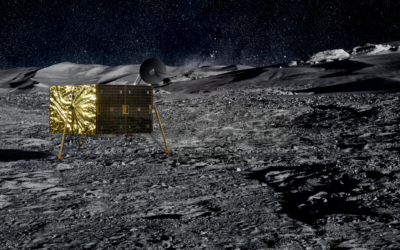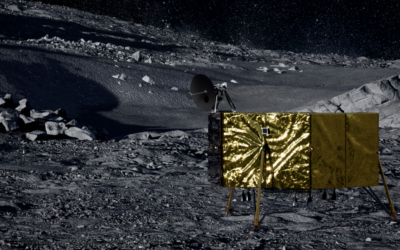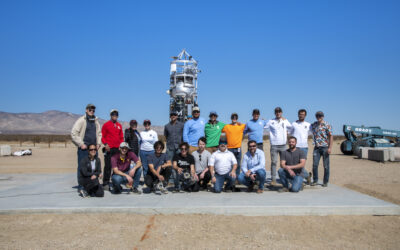Imagine having the opportunity to send your payload to the lunar surface. Not next decade, but in 2023! Well, that’s the incredible opportunity Masten and NASA’s Commercial Lunar Payload Services (CLPS) initiative has presented for eight visionary teams and their instruments.
These instruments – delivered by our Xelene lunar lander – will assess the composition of the lunar surface, detect volatiles such as water, methane, and carbon dioxide, and evaluate radiation in advance of human missions.
Each instrument is cool in their own way, and we couldn’t be prouder to be the company that will set them down safely on lunar south pole.
Check them out:
Paul Hayne (LASP / University of Colorado Boulder) and David Osterman (Ball Aerospace)
Instrument: Lunar Compact Infrared Imaging System (L-CIRiS)
This mission will deploy a radiometer — a device that measures infrared wavelengths of light — to explore the Moon’s surface composition, map its surface temperature distribution, and demonstrate the instrument’s feasibility for future lunar resource utilization activities.
Michael Ecord (Leidos), Edward Semones (NASA Johnson Space Center)
Instrument: Linear Energy Transfer Spectrometer (LETS)
The LETS is a sensor that will measure the radiation environment on the Moon’s surface. The payload also is being flown on a separate CLPS flight to the Moon in 2021.
Dr. R. Aileen Yingst (Planetary Science Institute), Michael Ravine (Malin Space Science Systems)
Instrument: Heimdall
Heimdall is a flexible camera system designed to model the properties of the Moon’s regolith, record plume/regolith interaction, and characterize and map geologic features. Other goals for Heimdall include characterizing potential Moon trafficability hazards to support future autonomous navigation.
Joe Zimo (Astrobotic), Red Whittaker (Carnegie Mellon)
Instrument: MoonRanger
MoonRanger will explore for lunar ice. It is a micro rover with the mobility and autonomy to operate in difficult polar conditions. It navigates in the dark when necessary, maps its journeys, and will carry NASA’s Neutron Spectrometer System, an instrument that can detect subsurface water ice by measuring the flow of neutron particles out of the soils.
Jacqueline Quinn, Janine Captain (NASA Kennedy Space Center)
Instrument: MSolo
The Mass Spectrometer Observing Lunar Operations (MSolo) evaluates potentially accessible resources on the Moon’s surface by measuring the volatiles from the lunar soil. MSolo will also assess gases in the environment after touchdown to understand what compounds are coming from the lunar surface and which are introduced by a lander itself.
Anthony Colaprete (NASA’s Ames Research Center)
Instrument: NIRVSS
Near-Infrared Volatile Spectrometer System is an instrument to measure surface composition and temperature, characterizing the variability of the lunar soils and detect volatiles such as methane, carbon dioxide, ammonia and water.
Xiaoli Sun (NASA Goddard Space Flight Center)
Instrument: LRA
Laser Retroreflector Array is a series of eight small retro-reflecting corner cubes deployed to measure distance and support landing accuracy. It requires no power or communications from the lander and can be detected by future spacecraft orbiting or landing on the Moon.
Sean Dougherty and David Cardinale (Maxar Technologies)
Instrument: Sample Acquisition, Morphology Filtering, and Probing of Lunar (SAMPLR)
SAMPLR is a robotic arm that collects samples of lunar regolith and demonstrates the use of a robotic scoop that can filter and isolate particles of different sizes. The arm represents Maxar’s latest generation of robotic systems and leverages the company’s experience in building robotic arms for six of NASA’s Mars rovers and landers.
“We’re so grateful to partner with these incredible missions and inspiring visionaries. And there are more that will join them on our first Lunar Delivery,” says Sean Mahoney, CEO of Masten Space Systems. “This is the inflection point for access to the Moon. This is the time to get your instrument on the 2023 landing and be a part of opening the Moon!”
Book your space now. Ad Lunam!


